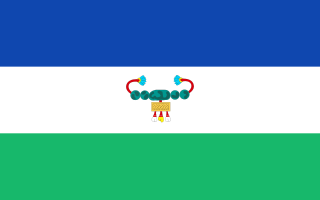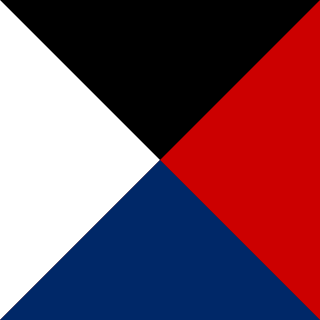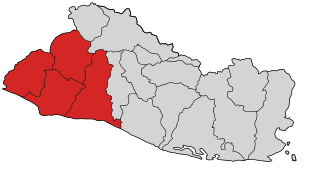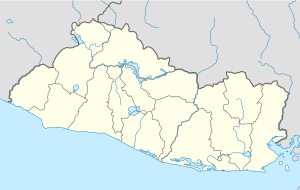
El Salvador, officially the Republic of El Salvador, is a country in Central America. It is bordered on the northeast by Honduras, on the northwest by Guatemala, and on the south by the Pacific Ocean. El Salvador's capital and largest city is San Salvador. The country's population in 2021 is estimated to be 6.8 million.

This is a demography of the population of El Salvador including population density, ethnicity, education level, health of the populace, economic status, religious affiliations and other aspects of the population.

Mestizo is a term used for racial classification to refer to a person of mixed European and Indigenous American ancestry. In certain regions such as Latin America, it may also refer to people who are culturally European regardless of ancestry. The term was used as an ethnic/racial category for mixed-race castas that evolved during the Spanish Empire. Although, broadly speaking, mestizo means someone of mixed European/Indigenous heritage, the term did not have a fixed meaning in the colonial period. It was a formal label for individuals in official documents, such as censuses, parish registers, Inquisition trials, and others. Priests and royal officials might have classified persons as mestizos, but individuals also used the term in self-identification.

Santa Ana is the second largest city in El Salvador, after the capital of San Salvador. It is located 64 kilometers northwest of San Salvador, the capital city. Santa Ana has approximately 374,830 (2017)) inhabitants and serves both as the capital of the department of Santa Ana and as the municipal seat for the surrounding municipality of the same name. For its administration the municipality is divided into 35 colonias (neighborhoods) and 318 small villages.

The Nawa people, also academically referred to as Pipil, are an indigenous group of Mesoamerican people inhabiting the western and central areas of present-day El Salvador, which they refer to as Kuskatan, later referred to as "Cuzcatlan" by the Spanish and their Indian auxiliaries the Mexica and Tlaxcalan. Although very few speakers are now left, they speak the Nawat language, which belongs to the Nahuatl dialect group. This dialect group stretches from Durango in Mexico to El Salvador, and historically as far as the Nicoya Peninsula of Costa Rica. According to Spanish chronicler Gonzalo Francisco de Oviedo, the Nawapipiltin, along with the neighboring Nicarao and Nonualco people, migrated from Mexico to their present locations beginning around the 8th century A.D., after the Chichimeca-Toltec civil war. As they settled in the area, they founded the city-state of Kuskatan, which was already home to various groups including the Lenca, Poqomam, and Xinca. The Nawas are closely related to the neighboring Nicarao people from Nicaragua, who branched off around 700-800 CE when they continued migrating south. They also spoke a version of Nawat, which would become the lingua franca in Central America during the Spanish colonial era. A hybrid form of Nawat-Spanish was spoken by many Nicaraguans up until the 19th century when it became extinct there, but is still around in parts of El Salvador, although still critically endangered.

The Nahuas are a group of the indigenous people of Mexico, El Salvador, Guatemala, Honduras, and Nicaragua. They comprise the largest indigenous group in Mexico and second largest in El Salvador. The Mexica (Aztecs) were of Nahua ethnicity, and the Toltecs are often thought to have been as well, though in the pre-Columbian period Nahuas were subdivided into many groups that did not necessarily share a common identity.

The music of El Salvador refers to Music of the Republic of El Salvador and is encompassed in the wider Latin American musical traditions.

Sonsonate is a department of El Salvador in the western part of the country. The capital is Sonsonate.

The culture of El Salvador is a Central American culture nation influenced by the clash of ancient Mesoamerica and medieval Iberian Peninsula. Salvadoran culture is influenced by Native American culture as well as Latin American culture. Mestizo culture and the Catholic Church dominates the country. Although the Romance language, Castilian Spanish, is the official and dominant language spoken in El Salvador, Salvadoran Spanish which is part of Central American Spanish has influences of Native American languages of El Salvador such as Lencan languages, Cacaopera language, Mayan languages and Pipil language, which are still spoken in some regions of El Salvador.

Juayúa is a city and municipality in the Sonsonate department of El Salvador. It is a small town up in the mountains, founded in 1577. Juayua is located in the western part of El Salvador, about 50 miles from San Salvador.

Nahuizalco is a municipality in the Sonsonate department of El Salvador. It lies on the "flowers route", 9 km from Sonsonate and 74 km from San Salvador, at 540 m above sea level on the southern part of the Apaneca-Ilamatepec mountain range. Per the population and housing census of 2007, Nahuizalco has 49,081 residents.

Apastepeque is a municipality in the San Vicente Department, El Salvador. It is located approximately 50 km east of San Salvador and approximately 6 km from San Vicente. The town has approximately 10,000 residents with 19,895 in municipality.

On 22 January 1932, Pipil peasants and members of the Communist Party of El Salvador (PCES) launched a rebellion against the Salvadoran military government due to widespread social unrest and the suppression of democratic political freedoms, especially after the cancelation of the results of the 1932 legislative election.

Acajutla is a seaport city in Sonsonate Department, El Salvador. The city is located at 13°35′24″N89°50′01″W on the Pacific coast of Central America and is El Salvador's principal seaport from which a large portion of the nation's exports of coffee, sugar, and Balsam of Peru are shipped. As a city, Acajutla is one of seventeen such districts in Sonsonate. As of 1992, the population of the city was 18,008.
Nawat is a Nahuan language native to Central America. It is the southernmost extant member of the Uto-Aztecan family. It was spoken in several parts of present-day Central America before the Spanish colonization, but now is mostly confined to western El Salvador. It has been on the verge of extinction in El Salvador and has already gone extinct elsewhere in Central America, but as of 2012 new second-language speakers are starting to appear.

Salvadorans, also known as Salvadorians, are citizens of El Salvador, a country in Central America. Most Salvadorans live in El Salvador, although there is also a significant Salvadoran diaspora, particularly in the United States, with smaller communities in other countries around the world.
Juan Carlos Panameño Sifón is a Salvadoran footballer

Afro Salvadorans are the descendants of the Sub-Saharan Africans brought to El Salvador via the Trans-atlantic slave trade during the colonial Spanish era.
Nestor Raul Renderos López is a Salvadoran professional footballer who plays as a midfielder.

María Feliciana de los Ángeles Miranda was a Salvadoran rebel. A young woman from Colonial El Salvador, she participated in the initial revolt against the Spanish colonial authorities. This effort failed, and Miranda was captured and sentenced to forced labor. She eventually died - either under torture or of disease - but was later recognized by the Salvadorean government as a hero of the independence movement.



















